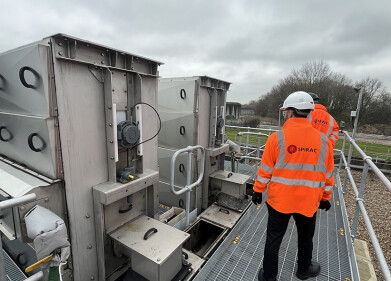Water/Wastewater
Rainwater harvesting systems add to CO2 emissions
Nov 15 2010
A UK study into rainwater harvesting (RWH) and greywater recycling (GWR) systems reveals that those systems in fact add to the energy use and CO2 emissions of homes, according to the NHBC Foundation.
The increase in greenhouse gas emissions can be attributed to the manufacture, installation, operational energy and carbon intensities of the systems in comparison to mains water. The research finds that the emissions increase can be as much as 100 per cent.
The findings call for vital developments in RWH and GWR technologies and hint to necessary reviews of the government’s water efficiency policy. This is particularly relevant in light of encouragement for these technologies through the Code for Sustainable Homes and Part G of the Building Regulations.
The Energy and Carbon Implications of Rainwater Harvesting and Greywater Recycling report was published in August and researched by the UK’s Environment Agency with support from the NHBC Foundation and the Energy Saving Trust.
Neil Smith, NHBC Foundation’s Research Manager, said: “Both the Code and Part G apply universally regardless of whether homes are being built in watery Kendal with its 1500mm annual rainfall or arid Chelmsford with its mere 625mm. Is that logical?
“Whilst we may all agree that it makes sense to save water, is rainwater harvesting really the best way to do it?”
The study was conducted with the help of RWH and GWR system suppliers who were identifying a number of generic systems. These systems were assessed against selected building types including houses, flats, a hotel, an office building and a school.
Carbon footprints were then calculated over 15, 30 and 60 year system lifetimes plus four scenarios to explore the effects of future changes.
An exemplary calculation highlights the carbon emissions of an average 90m² house with a RWH system including a polyethylene tank: over 30 years the total carbon footprint is approximately 1.25 – 2 tonnes of carbon dioxide equivalent.
The research points out that there is scope for many technology improvements for systems to reduce their carbon footprints. Storage tanks, pumps and treatment system account for a large proportion of the embodied carbon footprint of rainwater systems but technological changes in these parts could result in significant carbon reductions.
Events
May 23 2024 Beijing, China
May 23 2024 Beijing, China
Jun 10 2024 Algiers, Algeria
Jun 10 2024 Frankfurt, Germany
Singapore International Water Week | Water Expo
Jun 18 2024 Singapore













